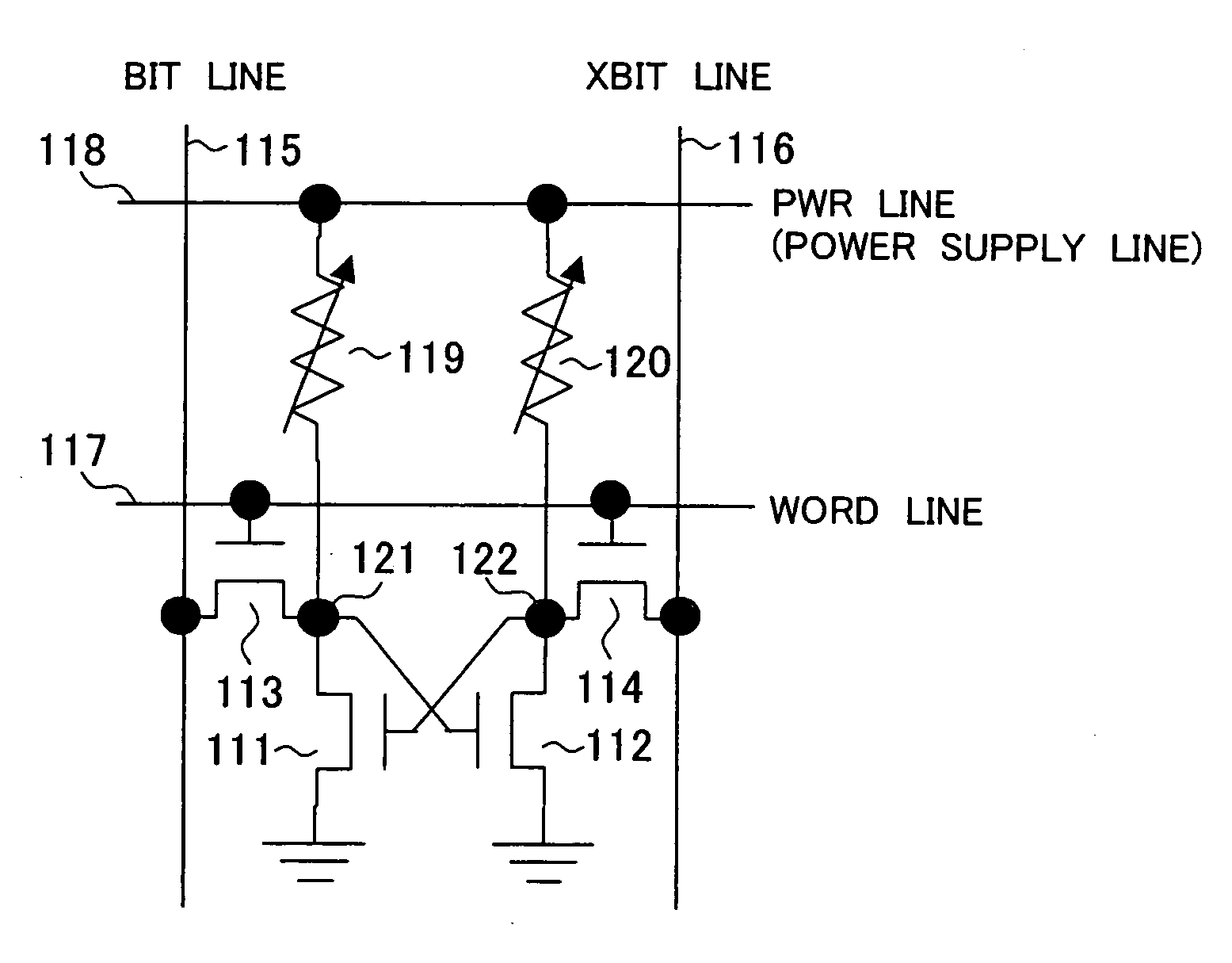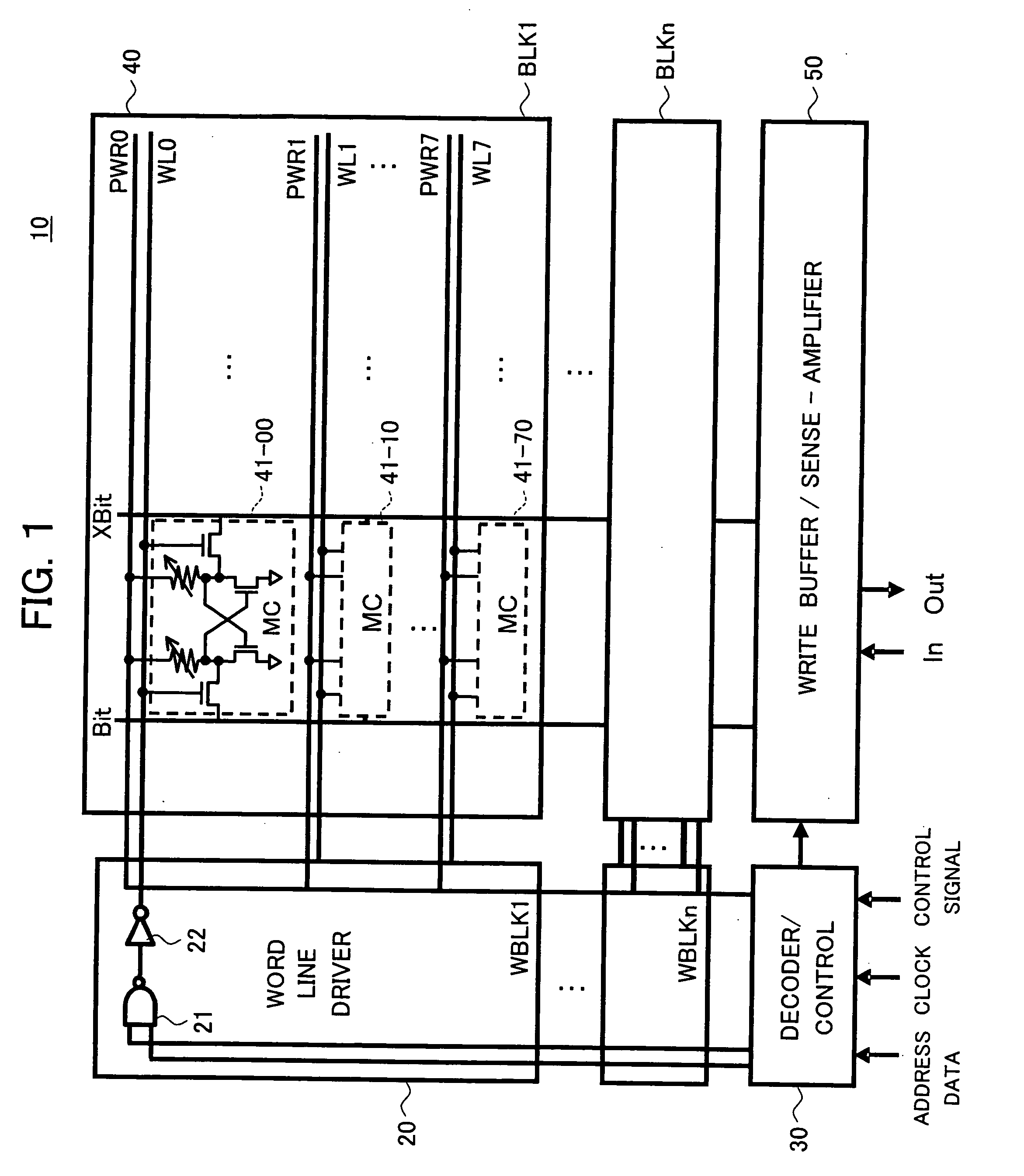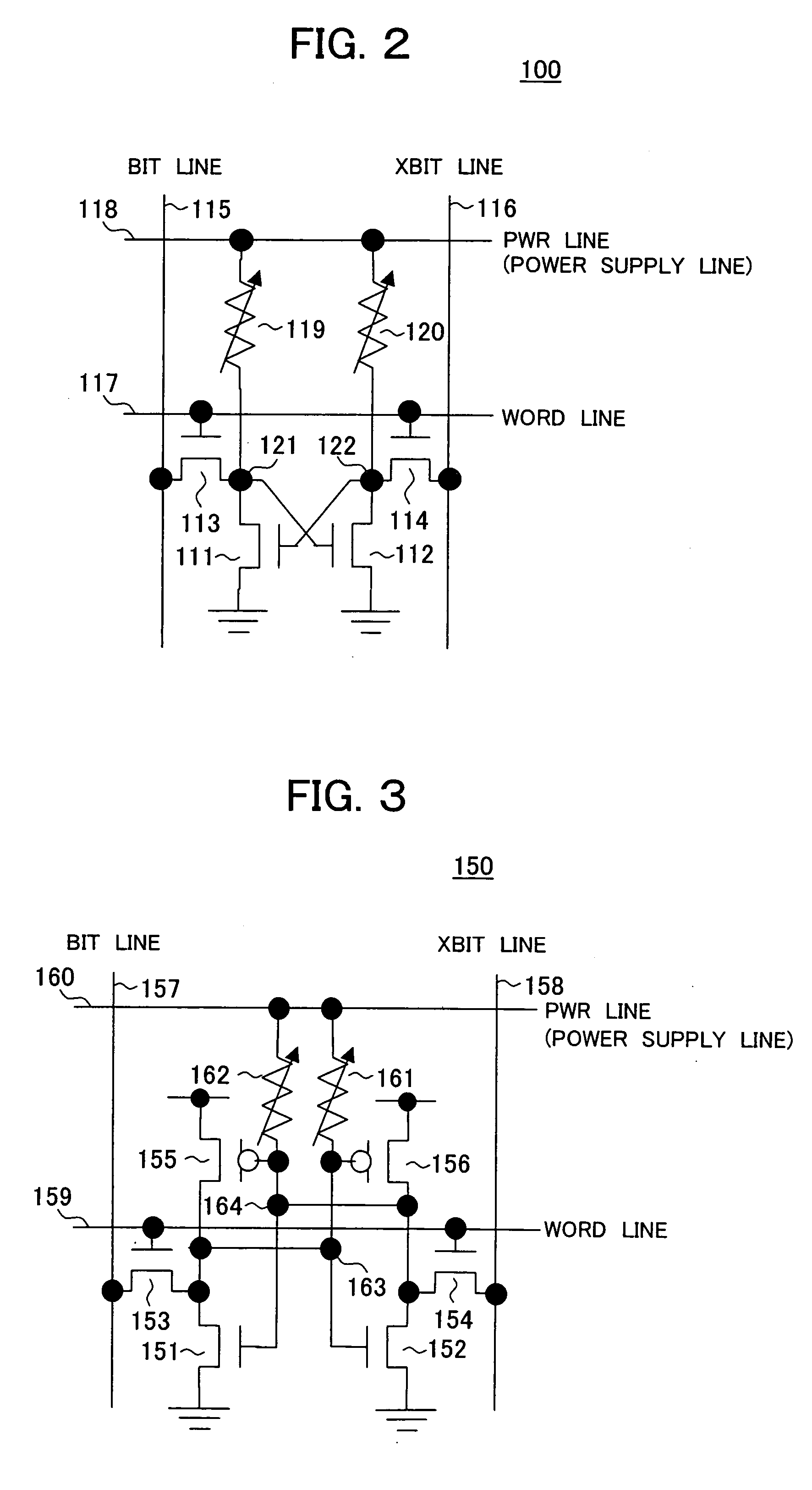Nonvolatile memory cell, storage device and nonvolatile logic circuit
- Summary
- Abstract
- Description
- Claims
- Application Information
AI Technical Summary
Benefits of technology
Problems solved by technology
Method used
Image
Examples
first embodiment
[0054]FIG. 1 is a block diagram of the configuration of a nonvolatile storage device 10 according to an embodiment of the present invention.
[0055] The nonvolatile storage device 10 is configured by a word line driver (word driver) circuit 20, a decoder / control circuit 30, a write buffer / sense-amplifier (Sense-Amp) circuit 50, a memory cell MC portion 40, etc.
[0056] In FIG. 1, for simplification, only one word driver circuit 20 and one memory block BLK1 are shown, but there are actually 2n / 23 memory blocks (BLK1) in which word lines are arranged in units of for example 23 (n is a positive integer and number of row address bits).
[0057] In FIG. 1, there are 23 word lines in the blocks (WBLK1 to WBLKn) of the word driver circuit 20. These are shown as WL0 to WL7. Memory cells MC (41-00, 41-10, . . . , 41-70, . . . ) are connected to the word lines (lines).
[0058] The decoder / control circuit 30 is configured by a pre-decoder, an internal timing control circuit, etc. and receives as in...
second embodiment
[0081] In a memory cell MC100 shown in FIG. 2, a drain of an N channel metal oxide semiconductor (NMOS) transistor 111 is connected to a drain / source of an NMOS transistor 113 of the transfer gate and one terminal of a variable resistance element 119, a gate of the transistor 111 is connected to the drain of an NMOS transistor 112, and a source of the transistor 111 is connected to a reference voltage for example GND (ground).
[0082] The other terminal of the variable resistance element 119 is connected to a power supply (PWR) line 118. The gate of the NMOS transistor 113 is connected to a word line 117, and its source / drain is connected to a bit line 115.
[0083] In the same way, the drain of the NMOS transistor 112 is connected to the drain / source of an NMOS transistor 114 of the transfer gate and one terminal of a variable resistance element 120, its gate is connected to the drain of the NMOS transistor 111, and its source is connected to the reference voltage for example GND (gro...
third embodiment
[0086]FIG. 3 shows the circuit configuration of a memory cell MC150 as another embodiment.
[0087] The memory cell MC150 shown in FIG. 3 is configured by PMOS transistors 155 and 156, NMOS transistors 151, 152, 153, and 154, and variable resistance elements 161 and 162.
[0088] A word line 159 is connected to gates of the NMOS transistors 153 and 154 of the transfer gate, and a bit line 157 and an inverted bit (XBit) line 158 are connected to drains / sources of the NMOS transistors 153 and 154.
[0089] The source of the PMOS transistor 155 is connected to the power supply, and its drain is connected to the drain of the NMOS transistor 151 and the source / drain of the NMOS transistor 153. Further, the source of the NMOS transistor 151 is connected to a reference potential, for example, the GND (ground).
[0090] In the same way, the source of the PMOS transistor 156 is connected to the power supply, and its drain is connected to the drain of the NMOS transistor 152 and the source / drain of t...
PUM
 Login to View More
Login to View More Abstract
Description
Claims
Application Information
 Login to View More
Login to View More - R&D
- Intellectual Property
- Life Sciences
- Materials
- Tech Scout
- Unparalleled Data Quality
- Higher Quality Content
- 60% Fewer Hallucinations
Browse by: Latest US Patents, China's latest patents, Technical Efficacy Thesaurus, Application Domain, Technology Topic, Popular Technical Reports.
© 2025 PatSnap. All rights reserved.Legal|Privacy policy|Modern Slavery Act Transparency Statement|Sitemap|About US| Contact US: help@patsnap.com



